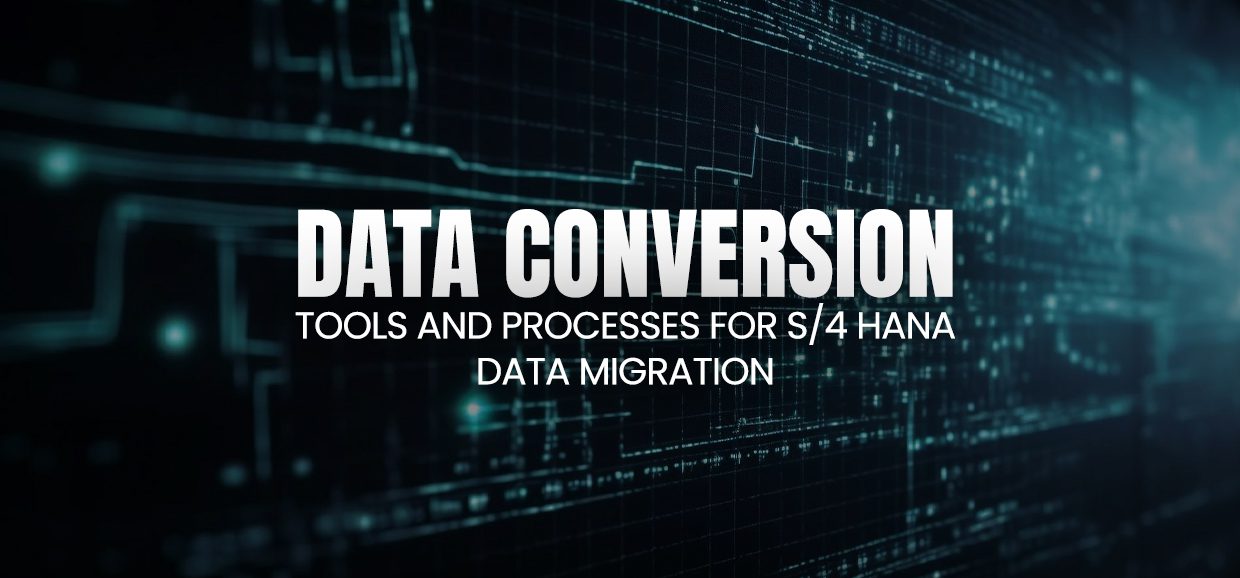
Data migration is a critical step in transitioning to SAP S/4 HANA, the next-generation enterprise resource planning (ERP) software. This migration involves moving your existing data from legacy systems to S/4 HANA, and it’s a complex process that requires careful planning and the right tools. In this blog post, we will explore the world of data conversion tools and processes for S/4 HANA data migration, helping you understand how to streamline this essential part of your ERP upgrade.
Understanding S/4 HANA Data Migration:
Before we dive into the tools and processes, let’s briefly understand what S/4 HANA data migration entails:
- Data Extraction: This is the initial step where data is extracted from your existing systems. This data can be in various formats and structures, depending on your legacy systems.
- Data Transformation: Once extracted, data often needs to be transformed and cleaned. This involves data mapping, data type conversion, and resolving data quality issues.
- Data Loading: After transformation, the data is loaded into the S/4 HANA system. This step should be carefully orchestrated to avoid data inconsistencies.
Now, let’s explore the tools and processes that can help you achieve a successful data migration:
Data Conversion Tools:
- SAP Data Services: SAP offers a robust data migration tool called SAP Data Services. It provides data extraction, transformation, and loading (ETL) capabilities. SAP Data Services is well-integrated with S/4 HANA, making it a preferred choice for many organizations.
- LSMW (Legacy System Migration Workbench) and Migration Cockpit: LSMW and Migration Cockpit are built-in tools in SAP that simplifies data load process. While not as feature-rich as SAP Data Services, they can be effective choice for straightforward data migration projects.
Data Conversion Processes:
- Data Mapping and Analysis: Before migration, thoroughly understand the data structures and relationships in your legacy systems. Create a data map that outlines how data will be transformed and loaded into S/4 HANA.
- Data Cleansing: Cleanse and validate data to ensure accuracy and consistency. Remove duplicates, correct errors, and standardize data formats.
- Data Validation and Testing: Rigorous testing is crucial. Develop test cases and perform multiple rounds of validation to ensure data integrity.
- Parallel Runs: Consider running parallel systems with both the legacy system and S/4 HANA to ensure that data matches and functions correctly in the new environment.
- Data Migration Plan: Develop a comprehensive data migration plan that outlines the timeline, responsibilities, and milestones. This plan should be a part of your overall S/4 HANA migration strategy.

Challenges and Best Practices:
- Data Quality: Poor data quality can lead to costly errors. Invest time in data cleansing and validation.
- Data Volume: Large datasets can be challenging to migrate. Consider data archiving or purging to reduce volume.
- Data Security: Ensure data privacy and security compliance during migration.
Conclusion:
Data conversion is a pivotal aspect of S/4 HANA data migration, and it demands careful planning and execution. Utilizing the right tools and following best practices can significantly reduce the risks associated with data migration and pave the way for a smooth transition to SAP’s next-generation ERP system.
Remember that every organization’s data migration needs are unique, and it’s essential to tailor your approach to your specific requirements. Seek expertise from SAP consultants or data migration specialists to ensure a successful transition to S/4 HANA.
